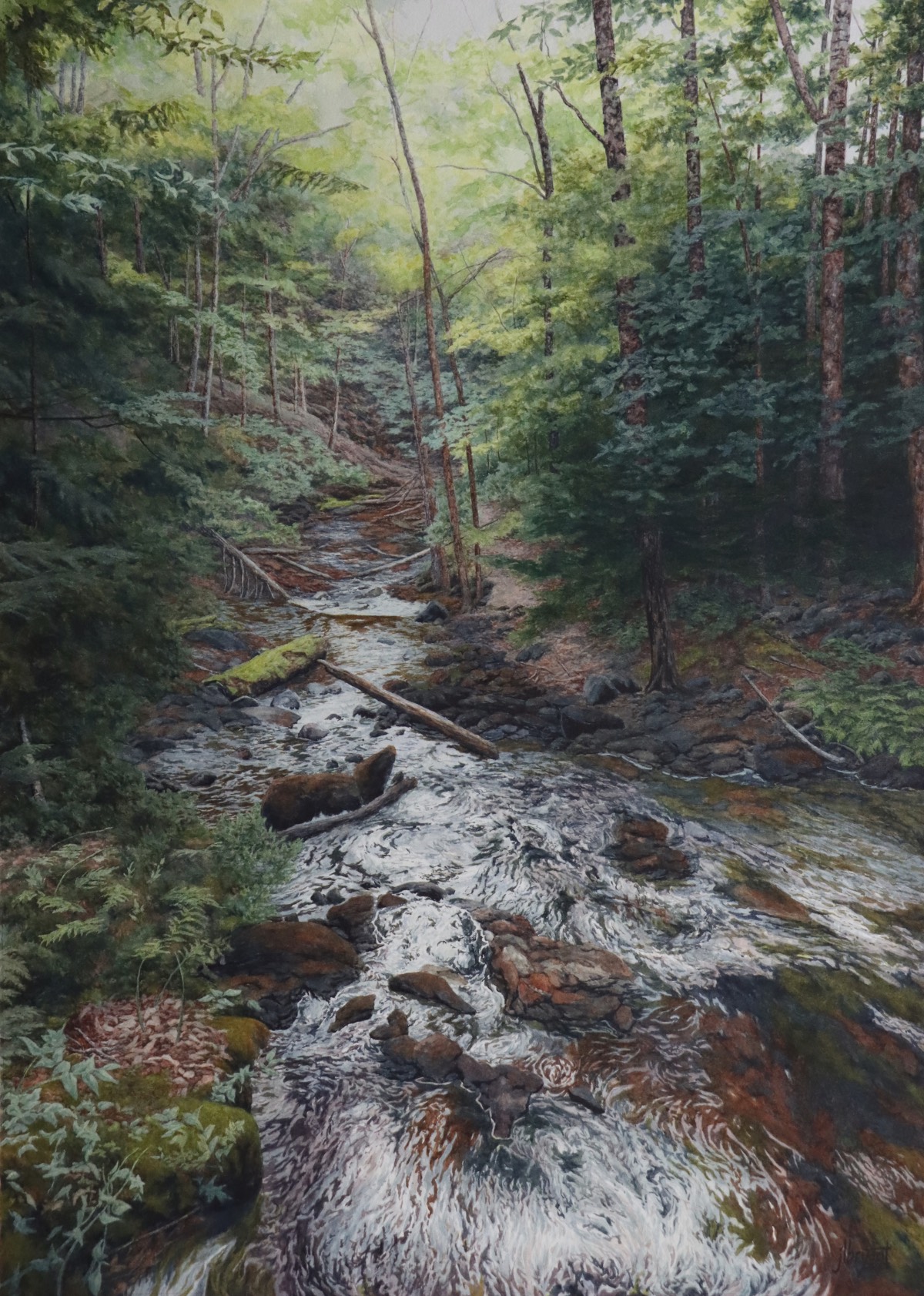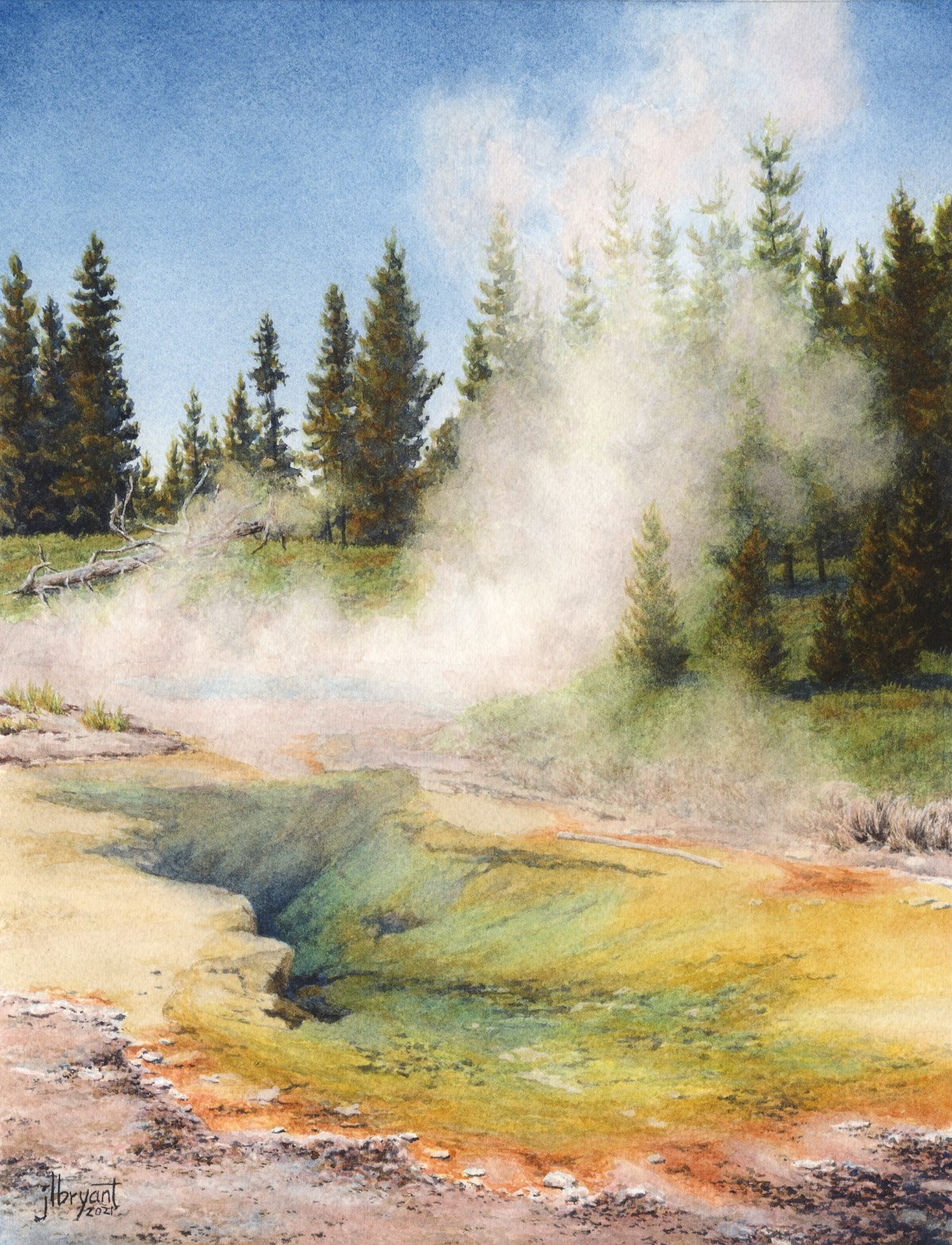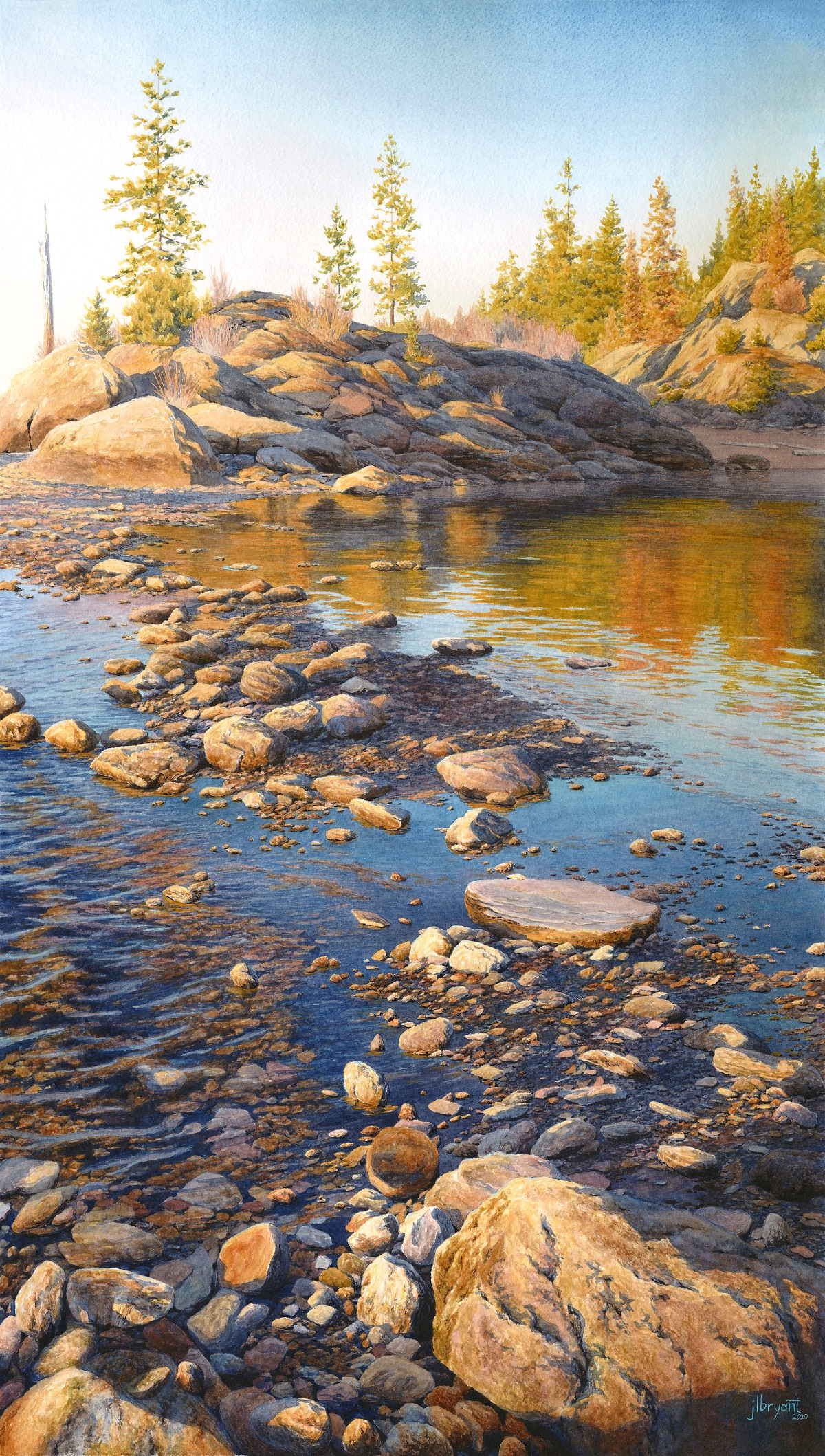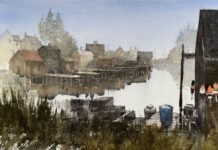By Bob Bahr
If humanity ever had to mount another expedition like Lewis & Clark’s Corps of Discovery — to some other world or similar — putting watercolorist Jessica L. Bryant in charge should be a serious consideration. The Idaho artist was selected for eight residencies at different National Parks, as well as one for the Bureau of Land Management, taking her to isolated backcountry spots to capture natural beauty relatively few people have seen. She approached each program with intensity — both in terms of artistic observation and fervent curiosity. The artist still seeks out subject matter that is off the grid, equipped with equal amounts of bravery and sensible caution, exploration and respectful care for the ecosystems, artfulness and scientific inquiry. The roots of these traits go back to her childhood.

“I was an introverted, only-ish child,” Bryant says. Her siblings were much older than her, creating a somewhat empty nest. “I was living in my own little world. Adults did their thing, and then there was me doing my stuff — a lot of which was visual exploration. Because I was easily carsick I had to stare out the window on trips, so I entertained myself visually as a kid. And I had a way of drawing things when I was really little that was perhaps unique. I would draw in a notebook with markers, standard things like a house and a rainbow. But my sun was a yellow sphere with a smaller off-center blue sphere in it. When my parents asked what that blue sphere was, I said, ‘There’s a blue thing that moves around in there.’ It was the burned-in image of the sun in my eyes. I tend to look at things intensely.”

INTENSITY OF TIME AND FOCUS
Bryant reports that she approaches everything with intensity, describing herself as an extroverted introvert who enjoys the company of people yet yearns for solitude in nature to be alone with her thoughts and observations. “I find everything fascinating,” she says. “And painting on location involves the intensity of time and the intensity of focus. Painting is often isolating, and there is an expanse that happens. What could be lonely, out there in the field, can be anything but lonely. There is so much to experience.

“When I was a kid, I always wanted to know what was around the corner,” she continues. “I had a desperate desire to keep walking and see what was just past the next hill, and then the next. Today, I’m interested in how the forms in the landscape undulate, move, and shift, and the variety of ways water and wind create the shapes — rounded or sharp. Even when streams are barely running, and only in the spring, it still changes the landscape.”

“Everything we see in our natural environment was shaped by wind and water,” she continues. “Snowpack bends a conifer. Streams carve a channel. I have always loved water in different ways, but at some point I grew fascinated by where water originates and how it is always moving to the next place. It’s elusive and not constant — moving and changing, going from snow to river to ocean and back again. Water quality is a tremendous indicator of the health of an ecosystem. I love all the parts about it, and I love being able to think about all these things as a painter.”







